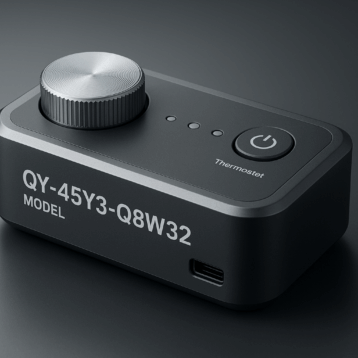
Design trends are constantly evolving, and the web design industry is no different. Websites, like any other product or service, get better and more innovative over time. And if you want to be on the cutting edge of web design, you should know what new trends are sweeping the industry.
Of course, technology is constantly advancing, so it’s no surprise that web design trends are also changing. This means that anyone who is interested in building a website should not only be aware of the web design trends themselves, but also of innovative website builders like Editor X.
This year, designers are watching out for these 5 web design trends that are predicted to happen in 2022.
The Future of Web Design: Mobile First
A new way of designing websites is entering the mainstream. This new way of thinking involves building websites with a mobile-first approach. Mobile-first design is about starting with the smallest screen and then working back to bigger screens. It means optimizing for how content will be consumed on a phone before scaling up for usage on tablets and desktops.
This makes sense when you think about how people use their phones and tablets today. Mobile devices are used more often than desktops. People expect information to appear on their phones faster, and they expect the websites to be intuitive to use even on small screens. When done right, web design focused on mobile devices is a big win for users, who get a better experience than they did with desktop-only websites, and is a big win for designers, who are now able to reach wider audiences than before.
The Future of Web Design: Responsive Websites
According to a report by the W3C, in 2022, 13.2% of the world’s population will be on a mobile device when they access the internet. That is an incredible amount of people accessing a website from a tiny screen. A responsive website needs to be able to scale to fit every device so that visitors can have a great experience on any device they use.
Businesses need to take this into account when creating their websites and blogs. If you don’t have a responsive website right now, you need to build one as soon as possible! Responsive web design is a relatively new phenomenon, but it’s one that has been growing in popularity.
In fact, at the end of 2014, Google announced that it would be including responsive design as a factor in its search engine rankings. The reason the responsive design is so popular is because of how easy it makes things for the user. Responsive websites adapt to the screen size of the visitor’s device, providing an optimum experience regardless of whether they are on a mobile phone or a desktop computer.
The Future of Web Design: Voice Searching
For the past decade, we’ve seen a huge shift in the way we use search engines. People are no longer typing in keywords to find what they’re looking for; they’re speaking. By 2022, voice searches will make up more than half of all searches online. For brands, this means more opportunities to connect with their customers.
This shift is going to completely change the way users find information and interact with content on the web, and it’s important that designers are prepared. Voice Searching is currently one of the most significant changes in web design. As the search engine becomes more conversational, we are moving away from typing URLs and words into a search bar and now speaking them.
This is the next step in search engine optimization and marketing. This means that it’s time for all web designers to consider how to optimize their website for voice searching.
This growth will inevitably have a major impact on web design and the way users interact with websites. Though this technology is not yet mainstream, it’s forcing designers and developers to start thinking about how voice-searching will change their industry.
The Future of Web Design: Virtual Reality and Augmented Reality
Virtual reality (VR) and augmented reality (AR) are the next frontiers in design, and they’re already being used to improve and enhance the user experience. Virtual reality, the simulation of a 3D image or sound by a computer, is the use of a virtual environment presented to the user in such a way that the user suspends belief and accepts it as a realistic view of the world around them.
It immerses the user in an entirely new environment, much like being inside a movie where the user can interact with the virtual world. You can walk around and take in the surroundings just like you would if you were there in person. Augmented reality (AR) is different from VR because it’s not completely immersive. Instead, the technology overlays virtual objects into your real-world environment. This allows you to view a digital experience and your surroundings at the same time.
The Future of Web Design: Smart Home Automation
The future of web design is also going to be in smart home automation. This means that a company’s website will be able to interact directly with the user’s appliances and devices. For example, if you log into your website, and ask Siri to turn on your favorite playlist, then your house’s WiFi-enabled speakers will start playing music.
This can be an entire new way for users to access their favorite content, and is a great way for sites to stay relevant. But getting there will require the assistance of the tech giants, like Google and Amazon.
Conclusion
While the web design industry is constantly evolving, there are some basic principles that should never be forgotten. Keep your visitors in mind and always ask yourself how you can make your site more user-friendly. By following these tips, you will be on the right track to creating and maintaining a successful website.










